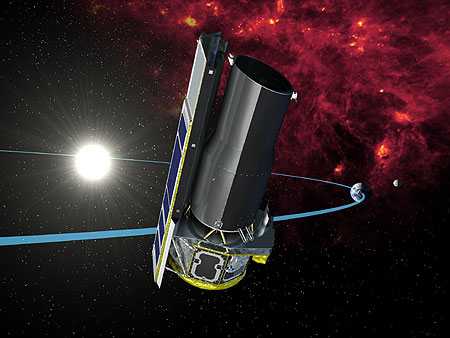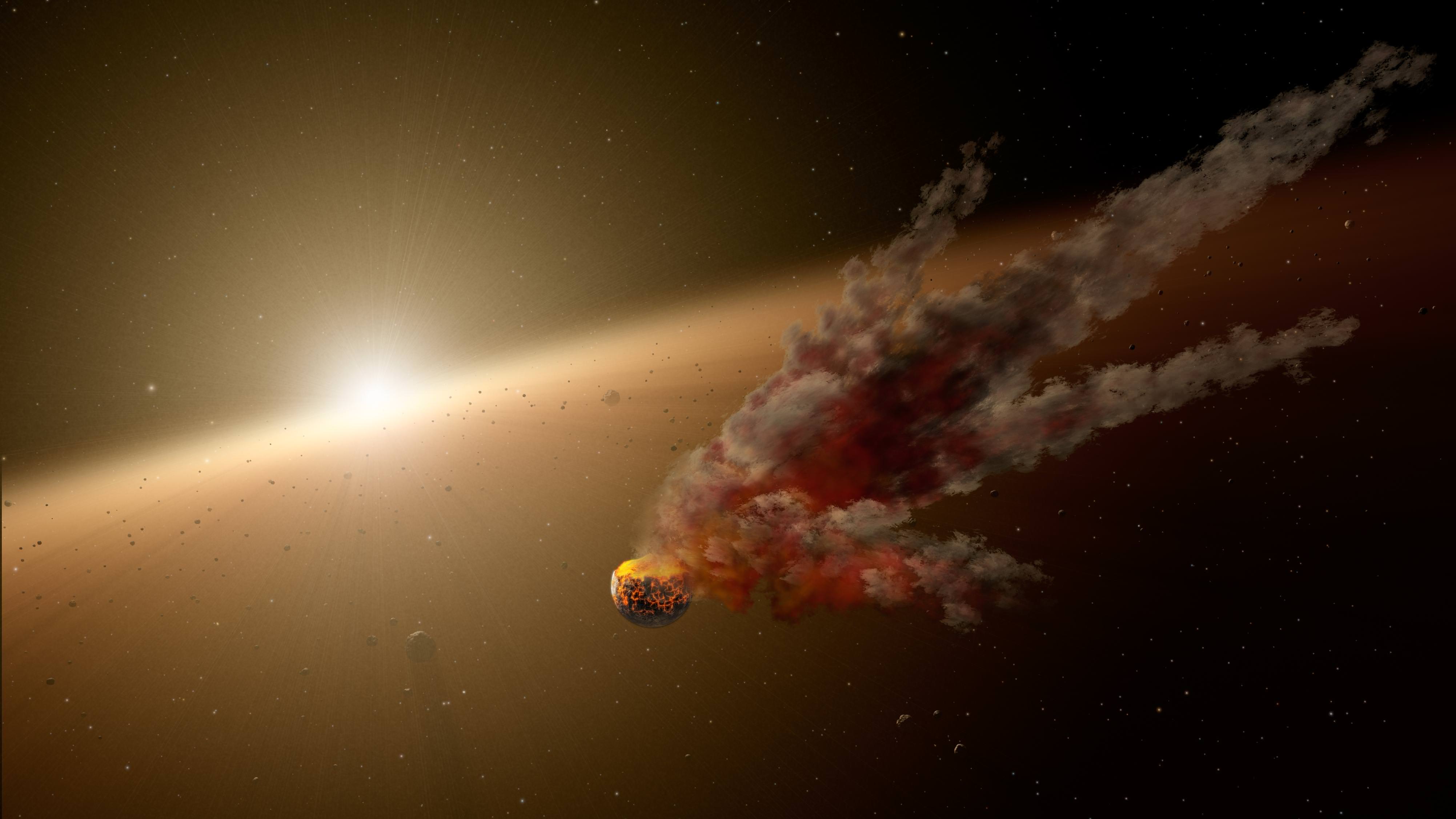When a crop of dust spread forth from the star NGC 2547-1D8 during 2012 observations, scientists quickly sprang into action. What they believe happened was two huge asteroids 1,200 light-years away crashed into each other. What’s more, researchers say that what they witnessed could herald planetary formation similar to what created our own solar system.
“We think two big asteroids crashed into each other, creating a huge cloud of grains the size of very fine sand, which are now smashing themselves into smithereens and slowly leaking away from the star,” stated lead author and graduate student Huan Meng of the University of Arizona.
The debris was tracked with NASA’s Spitzer Space Telescope, and represents the first time scientists have picked up information before and after an event such as this.
Scientists did see dust variability from the system before, which prompted them to put it under close scrutiny — sometimes looking at it every day. The biggest surge took place across five months in 2012. Observations were interrupted because the star was too close to our Sun’s field of view; when it was safe to return, that’s when scientists spotted all the dust.

“We not only witnessed what appears to be the wreckage of a huge smashup, but have been able to track how it is changing — the signal is fading as the cloud destroys itself by grinding its grains down so they escape from the star,” stated Kate Su of the University of Arizona, who is a co-author on the study.
It is believed that planets, moons and other objects in our solar system coalesced over millions of years from collisions such as this. The far-away collision did take place in a spot where planets could form some day, NASA noted, which makes it all the more interesting to scientists.
A paper on the research is available in the journal Science. Observations on the system continue.
Source: NASA

